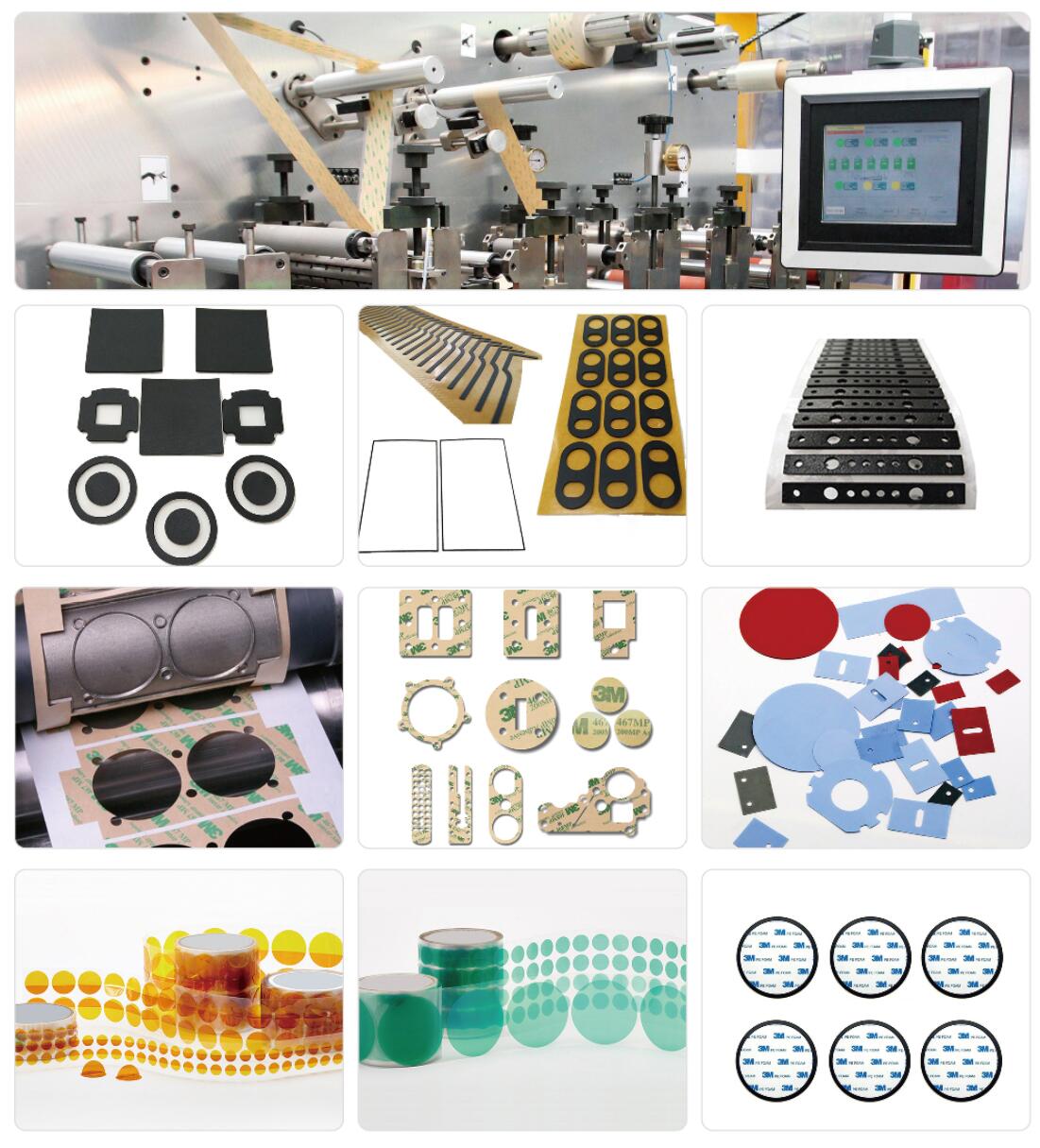PRECISION DIE CUTTING
We will take advantage of our die cutting technology to provide customers with optimal application solutions and cost savings.
Our process can be set to die-cut the following materials: tape, adhesive, foam, sponge, silicone foam, mesh, fabric, thin steel, plastic, film and rubber.
Contact us to discuss your die cutting needs.
- Rotary die cutting
Rotary die cutting uses a cylindrical die on a rotary press. A long sheet or a web of material is fed through the rotary press into an area which holds a rotary tool that will cut out shapes, make perforations or creases, or even cut the sheet or web into smaller parts. Rotary die cutting creates the same part repeatedly at very tight tolerances.
- Flat bed die cutting
The product is molded by pneumatic mechanical pressure using a mold. The amount is small, and the larger and thicker production material is suitable for flat bed die cutting.
- Match metal die cutting
In match metal die cutting, materials pass through a cutting die constructed of a top and bottom die which are matched (male/female) to provide an extremely precise cut. Match Metal die cutting is typically used for higher volume applications which require extreme precision.
- Compound die cutting
Compound die cutting performs multiple steps in one pass. The compound die cut implements more than one operation during the cutting cycle.
- Punch press
In a punch press material runs through the press while a hydraulic ram at the top powers the die to cut the material. This type of die cutting is advantageous for speed and productivity.
- Multilayer laminations
Multiple materials come together in a single pass to create a complex multilayer part.
- Zoned adhesive
Custom patterns of adhesive are laminated to material during the die cutting process, leaving adhesive only in the specified area(s).
- Kiss cutting
Kiss cutting is a process where a laminated material is die cut to the liner without cutting through the liner, leaving the die cut part affixed to the liner. Parts can be rolled around a core on the liner making them easier to handle.
- Pull-tabs and extended liners
Materials with top and bottom liners are cut so that a portion of the liner is cut to extend the material to leave a pull-tab. This pull-tab contributes to ease of handling and placement.
- Perforation die cutting
This process does not fully trim the materials away from the original shape, but instead creates a perforated area that remains in place until it is ready to be detached.
Custom machine manufacturing
Our well-trained electrical and mechanical engineers manufacture die-cutting equipment in two well-equipped machine shops. This sets us apart from other die-cutting companies and offers our customers the following benefits:
- Capital consumption will not be passed on to our customers.
- Expanded unique features.
- Mold design reduces waste to design goals.





